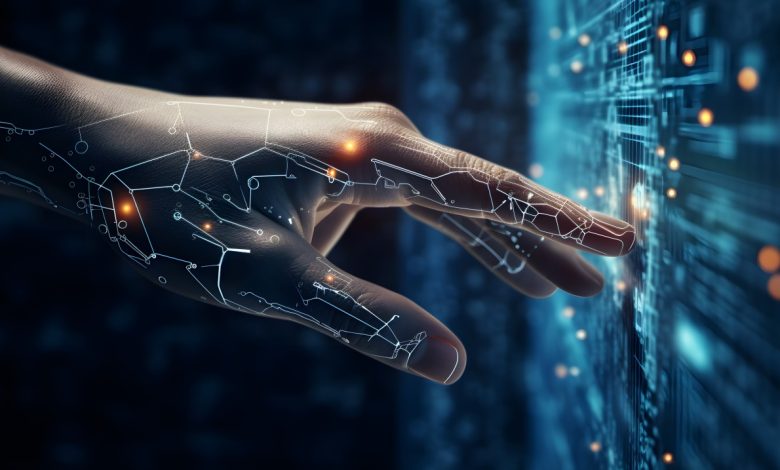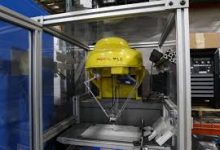
Introduction:
In the intricate tapestry of human perception, multisensory integration stands as a remarkable phenomenon that underpins our ability to make sense of the world. It encompasses the seamless blending and coordination of information from multiple sensory modalities, including sight, hearing, touch, taste, and smell, to form coherent perceptions, guide actions, and shape our experiences. From the everyday act of savoring a delicious meal to the intricate dance of musicians performing in perfect harmony, multisensory integration plays a fundamental role in shaping our interactions with the environment and each other. In this comprehensive exploration, we delve into the fascinating world of multisensory integration, unraveling its mechanisms, implications, and far-reaching impact on human cognition and behavior.
Understanding Multisensory Integration:
At its core, multisensory integration refers to the brain’s ability to combine information from different sensory modalities to form a unified perceptual experience. Rather than processing sensory inputs in isolation, the brain integrates signals from multiple senses to construct a coherent representation of the external world. This process occurs seamlessly and automatically, allowing us to perceive the world as a rich tapestry of sights, sounds, textures, tastes, and smells.
Mechanisms of Multisensory Integration:
Multisensory integration is facilitated by a complex network of brain regions and neural circuits that process sensory information and coordinate responses across different modalities. Key structures involved in multisensory integration include the superior colliculus, thalamus, and various cortical regions such as the parietal and frontal lobes. These regions receive inputs from sensory receptors and integrate them through processes such as spatial and temporal alignment, cross-modal binding, and probabilistic inference, resulting in the perception of unified multisensory events.
Exploring the Intricacies of Multisensory Integration: Unveiling the Mechanisms
In the captivating realm of human perception, multisensory integration stands as a cornerstone of our ability to make sense of the world around us. It represents the remarkable process by which the brain seamlessly integrates information from multiple sensory modalities, such as sight, hearing, touch, taste, and smell, to form coherent perceptions and guide behavior. Delving into the mechanisms underlying multisensory integration unveils a fascinating landscape of neural circuits, computational principles, and adaptive strategies that enable us to navigate our multisensory environment with precision and flexibility. In this extensive exploration, we unravel the intricacies of multisensory integration, shedding light on the mechanisms that govern this remarkable phenomenon.
Adaptive Strategies and Plasticity:
Multisensory integration is characterized by remarkable adaptability and plasticity, allowing the brain to flexibly adjust its processing mechanisms in response to changing environmental demands and sensory contexts. Plasticity in multisensory integration can manifest at various levels of the neural hierarchy, from synaptic modifications in individual neurons to reorganization of cortical circuits.
For example, sensory deprivation or loss can lead to compensatory changes in multisensory processing, whereby the remaining sensory modalities become hypersensitive or undergo functional reorganization to compensate for the loss of input. Similarly, experience-dependent plasticity enables the refinement of multisensory representations through repeated exposure to specific stimuli or sensory environments, leading to enhanced perceptual acuity and discrimination abilities.
Computational Models and Theoretical Frameworks:
Computational models and theoretical frameworks provide valuable insights into the underlying mechanisms of multisensory integration and guide empirical investigations into its neural substrates and functional properties. One prominent framework is the Bayesian framework, which posits that the brain combines sensory inputs probabilistically based on prior expectations and sensory evidence to form optimal perceptual estimates.
Other computational models, such as neural network models and dynamic systems approaches, offer complementary perspectives on how sensory information is processed, represented, and integrated across different levels of the nervous system. These models provide testable hypotheses and predictions that can be validated through neurophysiological experiments and behavioral studies.
Clinical Implications and Future Directions:
Understanding the mechanisms of multisensory integration has important clinical implications for the diagnosis, treatment, and rehabilitation of sensory and cognitive disorders. Dysfunction in multisensory processing has been implicated in various neurological and psychiatric conditions, including autism spectrum disorder (ASD), schizophrenia, and attention deficit hyperactivity disorder (ADHD).
Future research directions in multisensory integration aim to elucidate the neural mechanisms underlying complex phenomena such as perceptual illusions, synesthesia, and crossmodal correspondences. Additionally, advancements in neuroimaging techniques, such as functional magnetic resonance imaging (fMRI) and electroencephalography (EEG), offer new opportunities to investigate the spatiotemporal dynamics of multisensory processing in the human brain with unprecedented precision and resolution.
Conclusion:
In conclusion, multisensory integration represents a remarkable feat of neural computation that enables us to perceive and interact with the world in a rich and meaningful manner. By seamlessly combining information from multiple sensory modalities, the brain constructs a unified representation of the environment, guiding our perceptions, actions, and experiences. Through a deeper understanding of the mechanisms underlying multisensory integration, we gain valuable insights into the workings of the brain and the foundations of human perception and cognition. As research in this field continues to advance, we uncover new layers of complexity and sophistication in the neural mechanisms that shape our multisensory reality, opening doors to exciting discoveries and innovations in neuroscience and beyond.
Benefits and Implications:
Multisensory integration confers several advantages that enhance perception, cognition, and behavior. By combining information from multiple senses, individuals gain a more robust and accurate representation of the environment, allowing for better spatial localization, object recognition, and motion detection. Moreover, multisensory integration can enhance memory formation, learning, and decision-making by providing redundant or complementary information across modalities.
In social contexts, multisensory integration plays a crucial role in communication, empathy, and social bonding. For example, facial expressions, body language, and vocal cues convey rich multisensory information that facilitates emotional understanding and interpersonal connection. Similarly, shared multisensory experiences, such as dining together or attending live performances, foster social cohesion and strengthen social relationships.
Exploring the Benefits and Implications of Multisensory Integration
In the intricate tapestry of human perception, multisensory integration stands as a remarkable phenomenon that underpins our ability to make sense of the world. This process involves the seamless blending and coordination of information from multiple sensory modalities, such as sight, hearing, touch, taste, and smell, to form coherent perceptions and guide behavior. The benefits and implications of multisensory integration extend far beyond mere perception, influencing various aspects of cognition, behavior, and everyday life. In this comprehensive exploration, we delve into the multifaceted benefits and implications of multisensory integration, shedding light on its profound impact on human experience and society as a whole.
Enhanced Perceptual Acuity:
One of the primary benefits of multisensory integration is the enhancement of perceptual acuity and accuracy. By combining information from multiple senses, the brain can overcome the limitations of individual sensory modalities and achieve a more comprehensive understanding of the environment. For example, when navigating a crowded street, integrating visual cues with auditory signals can help individuals accurately localize the source of sounds amidst background noise, enhancing spatial awareness and safety.
Improved Cognitive Processing:
Multisensory integration also plays a crucial role in enhancing cognitive processing and decision-making. By integrating information from different sensory modalities, the brain can extract relevant features and extract meaningful patterns from complex sensory inputs more efficiently. This facilitates faster reaction times, better memory encoding, and more accurate judgment in various cognitive tasks. For instance, in a noisy classroom, integrating visual and auditory cues can help students focus attention, comprehend spoken instructions, and retain information more effectively.
Facilitated Social Interaction:
Multisensory integration is essential for effective social interaction and communication. By integrating facial expressions, body language, and vocal cues, individuals can infer emotional states, intentions, and social cues from others, fostering empathy, understanding, and social connection. Moreover, shared multisensory experiences, such as dining together or attending live performances, can strengthen social bonds and facilitate group cohesion, leading to enhanced social relationships and a sense of belonging.
Implications for Education and Learning:
In educational settings, multisensory integration has profound implications for teaching and learning. Multisensory learning approaches leverage auditory, visual, and kinesthetic modalities to engage students and accommodate diverse learning styles and preferences. By presenting information through multiple sensory channels, educators can enhance student engagement, comprehension, and retention of material, leading to improved academic performance and motivation.
Practical Applications in Healthcare:
Multisensory integration has practical applications in healthcare settings, where it can be used to improve patient care, rehabilitation, and therapeutic interventions. For example, multisensory environments, such as sensory gardens or Snoezelen rooms, provide therapeutic spaces for relaxation, sensory stimulation, and stress reduction. Additionally, multisensory interventions, such as music therapy or art therapy, leverage the power of multisensory experiences to promote healing, emotional expression, and well-being in patients with various medical conditions or disabilities.
Implications for Design and Innovation:
Understanding the principles of multisensory integration has implications for design and innovation across various domains, including product design, architecture, and urban planning. By considering multisensory factors such as color, texture, sound, and scent, designers can create environments, products, and experiences that engage all the senses, enhancing usability, aesthetic appeal, and user experience. For example, in retail environments, multisensory design elements can influence consumer behavior, evoke emotional responses, and enhance brand perception, leading to increased customer satisfaction and loyalty.
Ethical and Social Implications:
While multisensory integration offers numerous benefits, it also raises important ethical and social implications that warrant consideration. For example, manipulating sensory experiences for commercial or therapeutic purposes may raise concerns about privacy, autonomy, and consent. Additionally, ensuring equitable access to multisensory experiences for individuals with sensory impairments or neurodiverse conditions requires inclusive design practices and the development of assistive technologies that accommodate diverse needs and preferences.
Conclusion:
In conclusion, the benefits and implications of multisensory integration are vast and multifaceted, influencing various aspects of human cognition, behavior, and society. From enhancing perceptual acuity and cognitive processing to facilitating social interaction and innovation, multisensory integration plays a fundamental role in shaping our experiences and interactions with the world. By understanding the mechanisms and principles underlying multisensory integration, we can harness its potential to create more inclusive, engaging, and meaningful environments that enrich the lives of individuals and communities alike.
Applications and Practical Implications:
The principles of multisensory integration find numerous applications across various domains, including education, marketing, design, and healthcare. In educational settings, multisensory learning approaches leverage auditory, visual, and kinesthetic modalities to enhance student engagement, comprehension, and retention of information. Similarly, in marketing and advertising, multisensory stimuli are strategically used to evoke emotional responses, create memorable experiences, and influence consumer behavior.
In design and architecture, multisensory considerations inform the creation of environments that engage all the senses, promoting well-being, comfort, and usability. For example, sensory gardens incorporate elements such as fragrant plants, textured surfaces, and soothing sounds to create therapeutic spaces for relaxation and sensory stimulation. Additionally, in healthcare settings, multisensory interventions are employed to alleviate pain, reduce anxiety, and enhance the overall patient experience during medical procedures and rehabilitation therapies.
Exploring the Wide-ranging Applications and Practical Implications of Multisensory Integration
In the intricate dance of human perception, multisensory integration orchestrates a symphony of sensory inputs, weaving together sights, sounds, tastes, touches, and smells into a rich tapestry of experience. Beyond its role in shaping our perceptions, multisensory integration holds immense practical significance across a myriad of domains, from education and healthcare to marketing and design. In this comprehensive exploration, we delve into the diverse applications and practical implications of multisensory integration, uncovering its transformative impact on various aspects of human life and society.
Education and Learning:
Multisensory integration has profound implications for education and learning, offering innovative approaches to engage students, enhance comprehension, and promote retention of information. By incorporating auditory, visual, and kinesthetic modalities into teaching practices, educators can accommodate diverse learning styles and preferences, fostering deeper understanding and long-term memory retention. For example, interactive learning activities that combine visual demonstrations, hands-on experiments, and verbal explanations can create multisensory experiences that cater to different learning preferences and maximize student engagement.
Healthcare and Therapy:
In healthcare settings, multisensory integration is leveraged to improve patient care, rehabilitation, and therapeutic interventions. Multisensory environments, such as sensory gardens or Snoezelen rooms, provide therapeutic spaces for relaxation, sensory stimulation, and stress reduction in patients with various medical conditions or disabilities. Additionally, multisensory interventions, such as music therapy or art therapy, harness the power of multisensory experiences to promote healing, emotional expression, and well-being in individuals undergoing medical treatment or rehabilitation.
Marketing and Consumer Behavior:
Multisensory integration plays a pivotal role in influencing consumer behavior and shaping brand perceptions in marketing and advertising. By strategically incorporating multisensory stimuli, such as color, texture, scent, and sound, marketers can create immersive brand experiences that evoke emotional responses, enhance product appeal, and drive consumer engagement. For example, the use of ambient music, pleasant scents, and interactive displays in retail environments can create multisensory atmospheres that influence shopping behavior and increase sales.
Design and Innovation:
Understanding the principles of multisensory integration has implications for design and innovation across various industries, including product design, architecture, and urban planning. By considering multisensory factors such as color, texture, sound, and scent, designers can create environments, products, and experiences that engage all the senses, enhancing usability, aesthetic appeal, and user experience. For example, in architectural design, incorporating natural light, harmonious acoustics, and tactile materials can create multisensory environments that promote well-being, productivity, and comfort.
Virtual Reality and Augmented Reality:
Advancements in virtual reality (VR) and augmented reality (AR) technologies offer new opportunities to explore the potential of multisensory integration in immersive digital experiences. By combining visual, auditory, haptic, and olfactory cues, VR and AR platforms can create multisensory simulations that replicate real-world environments and engage users in interactive storytelling, training simulations, and therapeutic interventions. For example, VR-based exposure therapy can simulate multisensory environments to treat phobias and anxiety disorders by gradually exposing individuals to feared stimuli in a controlled and immersive manner.
Accessibility and Inclusive Design:
Multisensory integration also has implications for accessibility and inclusive design, ensuring that environments, products, and experiences are accessible to individuals with diverse sensory abilities and preferences. By considering multisensory factors such as contrast, clarity, and redundancy, designers can create inclusive environments that accommodate the needs of individuals with sensory impairments or neurodiverse conditions. For example, providing tactile signage, auditory cues, and multisensory feedback in public spaces can enhance navigation and accessibility for individuals with visual or auditory impairments.
Cognitive Enhancement and Neurorehabilitation:
Multisensory integration holds promise for enhancing cognitive function and facilitating neurorehabilitation in individuals with neurological disorders or cognitive impairments. Multisensory training programs and interventions can target specific cognitive functions, such as attention, memory, and executive function, by stimulating multiple sensory modalities simultaneously. For example, sensory integration therapy, a form of therapy commonly used in children with sensory processing disorders, aims to improve sensory processing and integration through structured multisensory activities and exercises.
Conclusion:
In conclusion, the applications and practical implications of multisensory integration are vast and far-reaching, influencing various domains of human life and society. From education and healthcare to marketing and design, multisensory integration offers innovative approaches to engage individuals, enhance experiences, and promote well-being. By harnessing the power of multisensory experiences, we can create more inclusive, engaging, and meaningful environments that enrich the lives of individuals and communities alike, paving the way for a more vibrant and interconnected future.
Future Directions and Challenges:
As research on multisensory integration continues to advance, future directions include exploring the neural mechanisms underlying complex multisensory phenomena, such as synesthesia and crossmodal correspondences. Additionally, advancements in technology, such as virtual reality (VR) and augmented reality (AR), offer new opportunities to investigate multisensory perception and create immersive multisensory experiences that blur the boundaries between physical and virtual realities.
However, challenges remain in understanding the individual differences in multisensory processing and addressing the ethical implications of manipulating sensory experiences for commercial or therapeutic purposes. Furthermore, ensuring equitable access to multisensory experiences for individuals with sensory impairments or neurodiverse conditions requires innovative approaches to inclusive design and assistive technologies.
Navigating the Future of Multisensory Integration: Exploring Directions and Challenges
As we journey into the future, the landscape of multisensory integration unfolds with boundless possibilities and intriguing challenges. From the advent of advanced technologies to the complexities of understanding the human brain, the path forward in unraveling the mysteries of multisensory integration presents both excitement and uncertainty. In this comprehensive exploration, we delve into the future directions and challenges of multisensory integration, charting a course toward deeper understanding, innovation, and societal impact.
Advancements in Technology:
The future of multisensory integration is intricately linked to advancements in technology, particularly in the fields of neuroscience, artificial intelligence (AI), and human-computer interaction (HCI). Emerging neuroimaging techniques, such as functional magnetic resonance imaging (fMRI) and electroencephalography (EEG), offer unprecedented insights into the neural mechanisms underlying multisensory processing, enabling researchers to map and visualize brain activity with greater precision and resolution.
Additionally, advances in AI and machine learning algorithms hold promise for modeling and simulating complex multisensory interactions, facilitating the development of intelligent systems that can adaptively integrate and respond to sensory inputs in real-time. Furthermore, developments in HCI technologies, such as virtual reality (VR), augmented reality (AR), and wearable devices, open up new frontiers in creating immersive multisensory experiences that blur the boundaries between physical and digital realities.
Understanding Neuroplasticity and Adaptation:
A key challenge in the future of multisensory integration lies in understanding the mechanisms of neuroplasticity and adaptation that underpin the brain’s ability to flexibly integrate and adapt to changing sensory environments. Neuroplasticity refers to the brain’s capacity to reorganize its structure and function in response to sensory experiences, environmental stimuli, and learning.
By elucidating the principles of neuroplasticity, researchers can uncover the neural mechanisms that govern multisensory integration and develop interventions to enhance cognitive function, rehabilitate sensory impairments, and promote neurorecovery in individuals with neurological disorders or cognitive deficits. Moreover, understanding how the brain adapts to multisensory inputs over time can inform the design of personalized interventions and training programs that optimize multisensory processing and cognitive performance.
Addressing Ethical and Societal Implications:
As multisensory technologies become more pervasive in everyday life, it is imperative to address ethical and societal implications related to privacy, autonomy, and accessibility. The widespread adoption of multisensory technologies raises concerns about data privacy, security, and consent, particularly in the context of biometric data collection and analysis.
Furthermore, ensuring equitable access to multisensory experiences for individuals with sensory impairments or neurodiverse conditions requires proactive measures to address barriers to accessibility and promote inclusive design practices. By prioritizing user-centered design and incorporating diverse perspectives and voices in the development of multisensory technologies, we can create more inclusive, ethical, and socially responsible solutions that benefit all members of society.
Exploring Multisensory Interaction in Virtual Environments:
The proliferation of virtual environments and digital platforms presents new opportunities to explore the principles of multisensory interaction and create immersive experiences that engage all the senses. Virtual reality (VR) and augmented reality (AR) technologies enable users to interact with digital content in multisensory ways, blurring the boundaries between physical and virtual realities.
By leveraging multisensory cues such as spatial audio, haptic feedback, and olfactory stimulation, VR and AR platforms can create highly immersive and realistic simulations that enhance learning, entertainment, and therapeutic interventions. Moreover, exploring multisensory interaction in virtual environments can provide valuable insights into the underlying mechanisms of human perception and cognition, informing the design of future technologies and applications.
Collaboration Across Disciplines:
Addressing the complex challenges and opportunities in the future of multisensory integration requires collaboration across disciplines, including neuroscience, psychology, engineering, computer science, and design. By fostering interdisciplinary research collaborations and partnerships, we can leverage diverse expertise and perspectives to tackle multifaceted problems and drive innovation in multisensory technologies and applications.
Moreover, fostering collaboration between academia, industry, and government agencies can facilitate the translation of research findings into real-world applications and solutions that benefit society. By bridging the gap between research and practice, we can accelerate the pace of discovery, development, and adoption of multisensory technologies that enhance human experience and well-being.
Conclusion:
In conclusion, multisensory integration is a fascinating phenomenon that lies at the heart of human perception and cognition. By seamlessly combining information from multiple senses, the brain constructs a rich and coherent representation of the world, shaping our experiences, interactions, and understanding of reality. From enhancing perception and cognition to fostering social connection and well-being, multisensory integration holds profound implications for human behavior and society. As we continue to unravel the mysteries of multisensory processing, we unlock new possibilities for innovation, creativity, and human flourishing in a multisensory world, The future of multisensory integration holds immense promise for advancing our understanding of the human brain, enhancing human-computer interaction, and shaping the way we perceive and interact with the world. By embracing technological advancements, addressing ethical and societal considerations, and fostering interdisciplinary collaboration, we can navigate the challenges and opportunities that lie ahead and unlock the full potential of multisensory integration to enrich human experience and improve quality of life for all.




